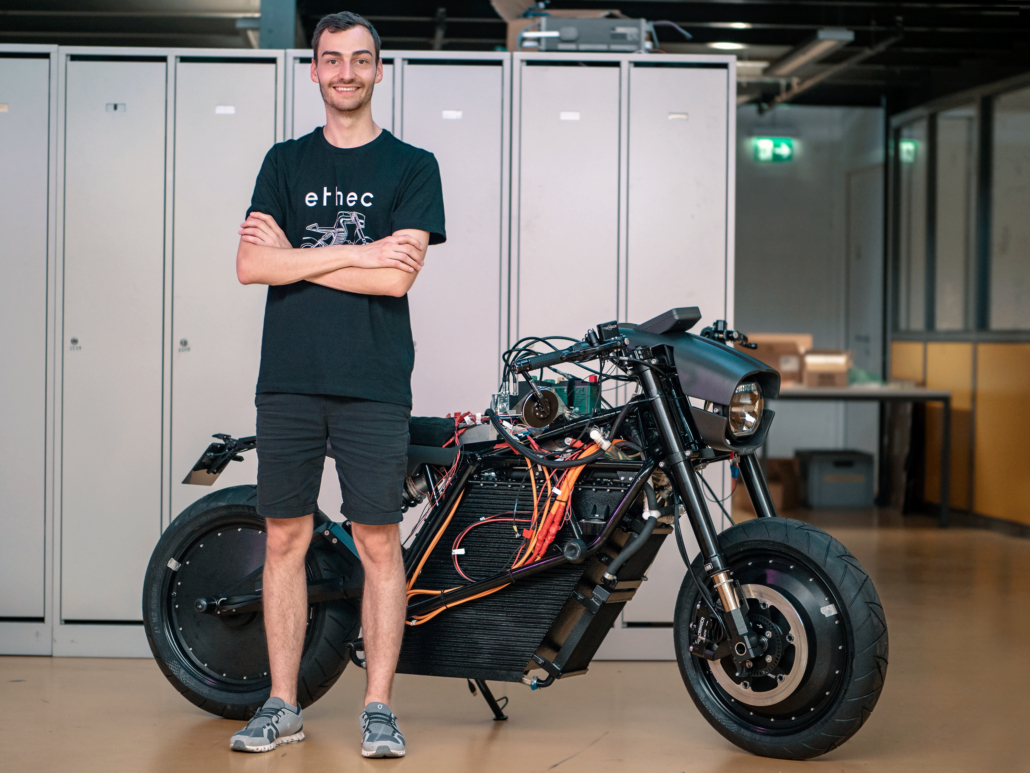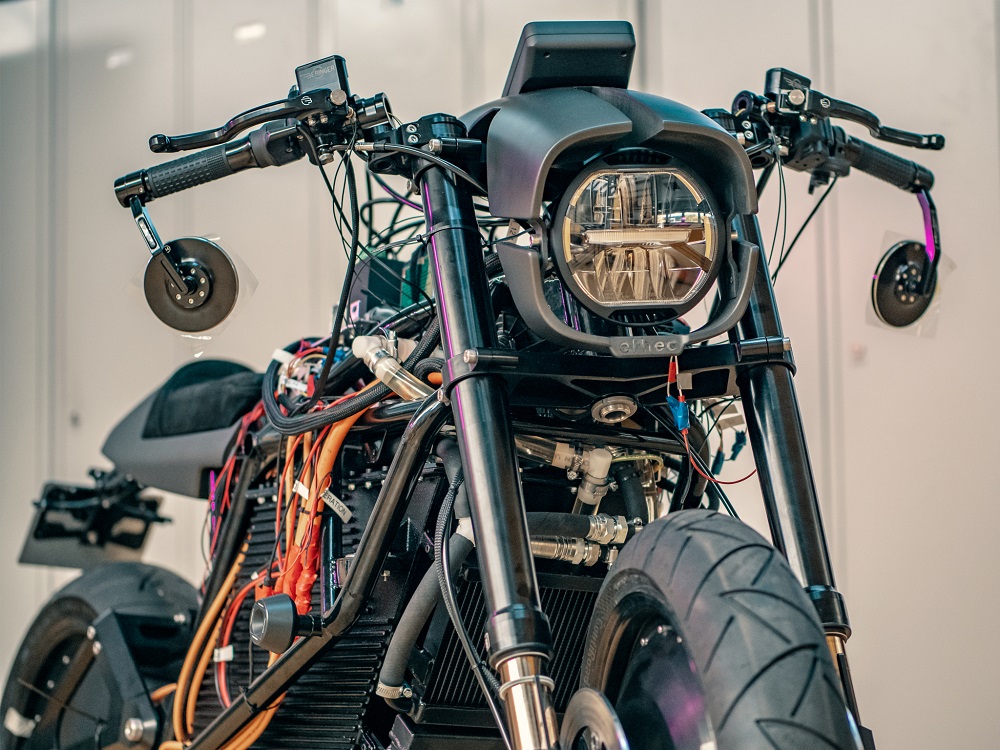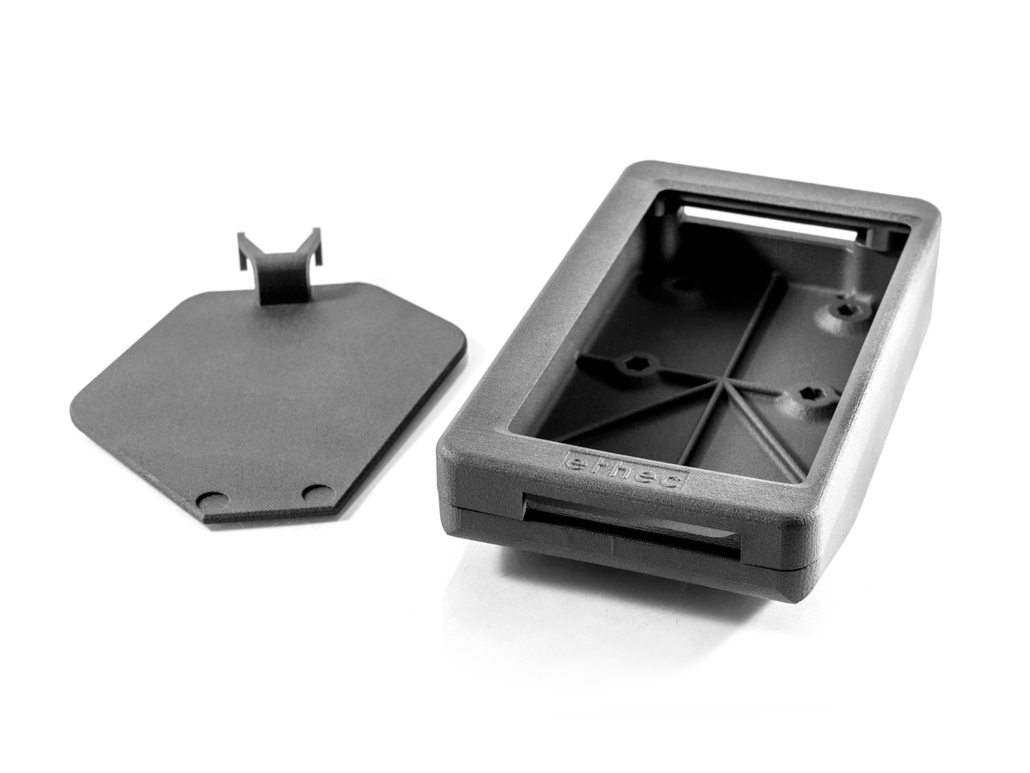China3D printingNet, October 20th, a team of ten students from ETH Zurich has used Sintratec 3D printingtechnology to design and manufacture fully functional prototypes of electric motorcycles.
It is understood that the ETHEC urban project took only one year from concept to assembly and was motivated by environmental sustainability concerns. Tobias Oesch, a mechanical engineering student and technical lead, explained: “If we are to tackle climate change, major improvements to mobility in cities and suburbs will have to be made. Motorcycles are more efficient than regular cars, but we hardly see it All-electric motorcycles on the street, that has to change.”

Tobias Oesch and electric motorcycles. Image via ETH Zurich.
future electric motorcycle
In many of today’s rear-wheel drive motorcycles, up to 80% of the engine’s energy output is lost during transport (this problem is usually centered on the front wheels). For electric vehicles, this can be an inconvenience to charging during the journey, which results in significantly shorter driving distances.
In response, the team simply decided to integrate an electric motor on the front wheel as well, resulting in a two-hub electric motor assembly. The second electric motor can be used as an additional generator to recover some of the motion and braking energy that would otherwise be lost to the environment, which is then circulated back into the system. Even with a smaller battery, it is possible to extend the vehicle’s range to 315 kilometers and significantly improve its energy efficiency.
Oesch added: “The ETHEC city is primarily a research prototype for us to study this recycling method and thus improve the electric vehicle industry in the future.”

Electric Motorcycle. Image via ETH Zurich.
3D printinghelpElectric Motorcycle
Since motorcycles were a student project, budgets and schedules were tight.As a result, traditional manufacturing methods for many complex parts became impossible, so the team turned to3D printingprocesses such as SLA and PBF.when headquartered in Switzerland3D printingMachine manufacturer Sintratec has lavished praise on this, using its S2 SLS system to sponsor several components of the project, such as the display housing and fuel filler cap.
Additively manufactured parts printed with PA12 nylon must be durable and lightweight. “The quality of Sintratec’s products is very precise, and the surface quality is very good,” Oesch explained. “The display case in particular had to be durable enough to withstand weathering, strong enough to withstand mechanical shock, and strong enough to be used without deformation.”
Students also said they were particularly impressed by the design freedom afforded by the SLS process. Some parts were redesigned in real-time to allow for more complex structures, while multiple functions were combined and merged into one part, resulting in further savings in production costs. The prototype motorcycle has now been assembled and painted, and the ETH team is currently working on the finishing touches.

3D printing
Display housing (right) and fuel filler cap (left)” alt=”
3D printing
Display housing (right) and fuel filler cap (left)” width=”620″ height=”465″ />
3D printingdisplay housing (right) and fuel filler cap (left). Image via ETH Zurich.
China3D printingIn recent years, additive manufacturing has entered the automotive industry at an ever-increasing rate. Automaker Continental AG recently installed a Stratasys Fortus 450mc FDM at its Additive Design and Manufacturing (ADaM) Competence Center in Karben, Germany 3D printingmachine. This system has been used to manufacture ESD compliant components to prevent electrostatic discharge in the workshop.
Elsewhere, household name Chevrolet recently announced that its motorsport division will be equipped with3D printingParts with more than 80,000 miles driven in vehicles featuring features including3D printingFuel tank, HVAC box, hydration system and headlight assembly.
China3D printingnetworkOriginal article!
(responsible editor: admin)


0 Comments for “University of Zurich uses SLS 3D printing technology to create fully functional prototype of electric motorcycle”